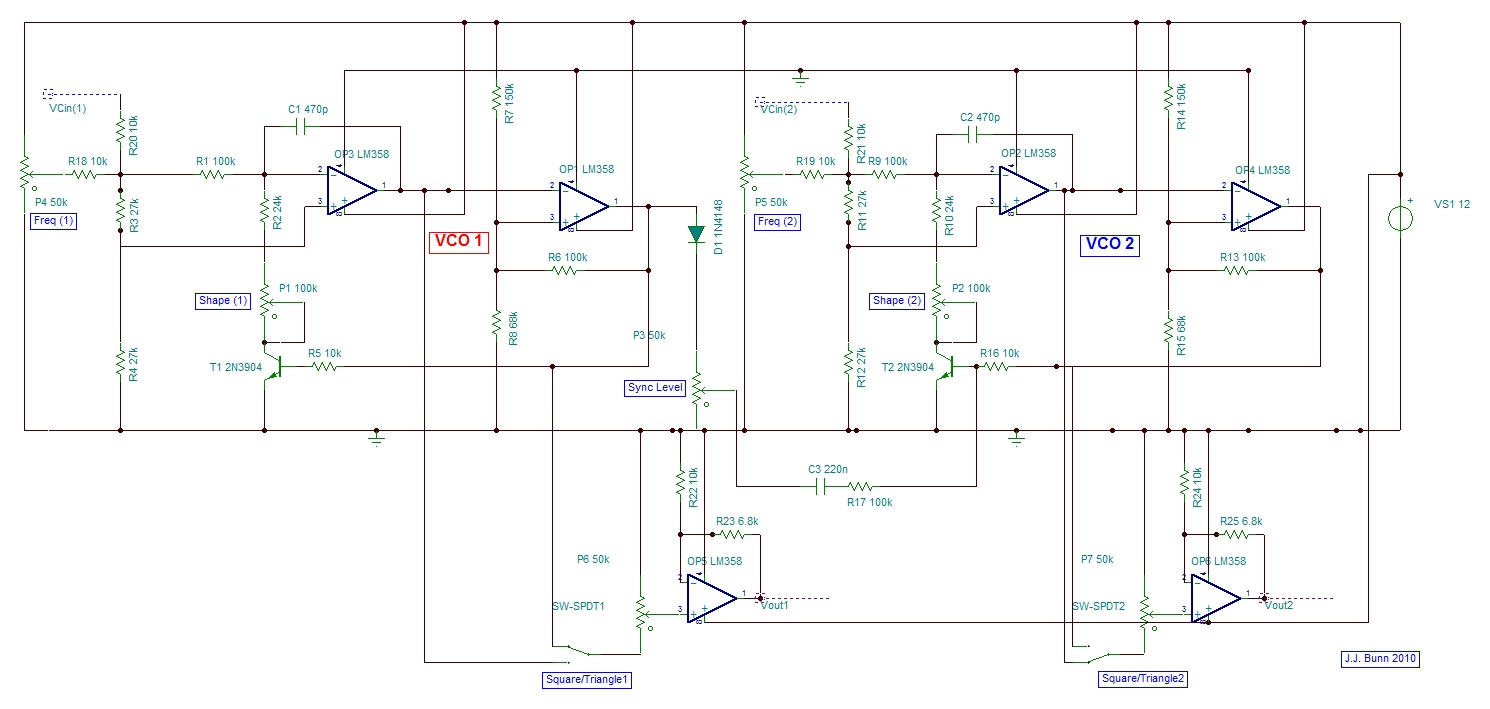
This project was begun in October 2009. After completing my Minisonic 2 synthesizer, I slowly came to realise that I would like to build a modular synth that allowed me to experiment with various ideas I had for analogue sound processing. Over several years I accumulated parts and components that I thought might be useful. At some point it came time to actually start building the synth.
This is the dual VCO I designed. It has a single power rail and uses a single LM358 twin opamp for each VCO. A third LM358 is used to set the output level for a switch selected triangle/ramp or squarewave. The "Shape" controls vary the ramp from being left handed through triangular through right handed. Unfortunately the Shape control affects the frequency of the VCO.
The "Sync" control allows VCO1 to modify the charge cycle of VCO2's capacitor, and hence to synchronize VCO2 to a multiple or integer dividend of VCO1.
The inputs are linear only. A separate log voltage control will be available in a separate module.
With zero volts at VCin the "Freq" controls can be used to swing each VCO between sub-Hz and around 8kHz.

Here is the front panel of the Dual VCO
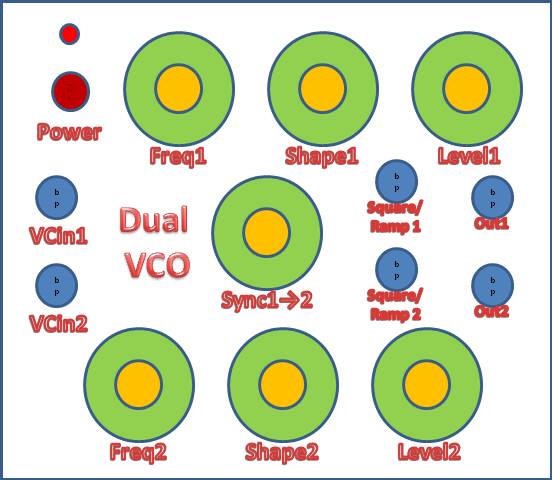
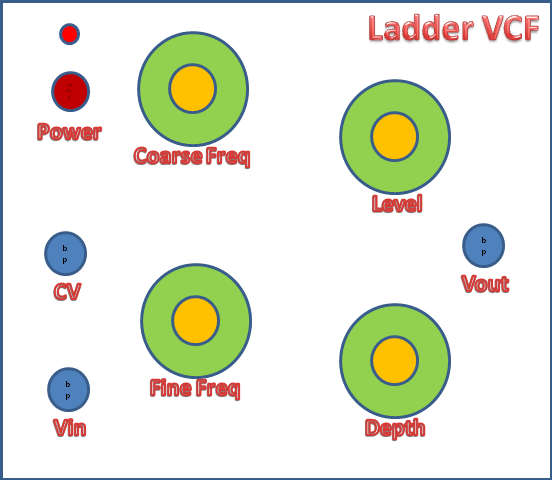
The cabinet is constructed from an old drawer. The base of the drawer, 1/4" particleboard, was removed and cut into a set of module face plates: six of size approximately 5 3/4" x 5" and three of 5 3/4" x 10" (for larger modules e.g. the sequencer).
The frame of the drawer was strengthened by two struts, which will also act as attachment points for the module faceplates. Each module will be attached using a pair of easily removed small screws at one or both vertical edges.
Here is the frame and module faceplates after cutting.

The sequencer allows up to 10 voltage levels to be repeatedly sent to another module. Each voltage level is set by a pot labelled "0" to "9" on the front panel. The sequence length is controlled by a rotary switch that selects between 1 and 10. An internal clock determines the rate at which each of the voltage levels is presented to the output. The clock rate can be controlled by the "Clock Rate" pot on the front panel. The clock can also be turned off (using the "Clock/Stop/Ext" switch) to allow either single stepping through the levels (using the "Step" pushbutton) or an external clock input. When the internal or external clock is operating, an LED next to the "Clock Rate" control flashes in time with it.
As each step is selected, a large Nixie tube display at the top centre of the faceplate indicates the step number.
Power is supplied to the sequences using the Power toggle switch on the faceplate: power is on when the nearby LED is illuminated.
Here is the schematic:
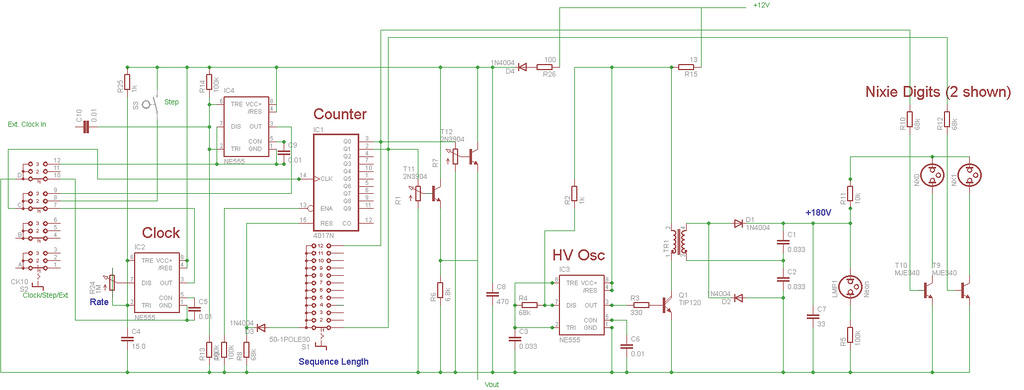
Here is the layout for the Sequencer front panel (Powerpoint file here):
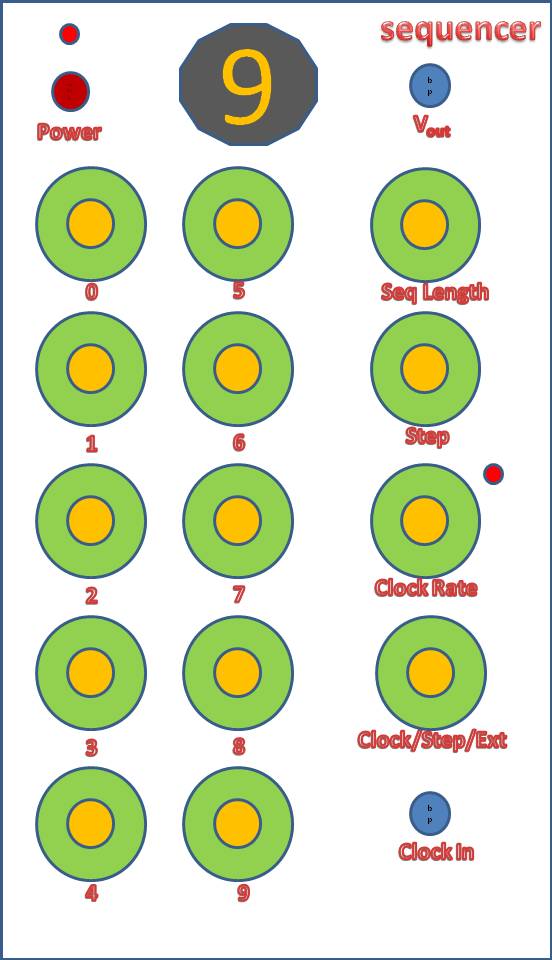
Based on the Intersil 8038. A general purpose oscillator covering the full audio range and offering sine, triangle and square wave adjustable outputs.
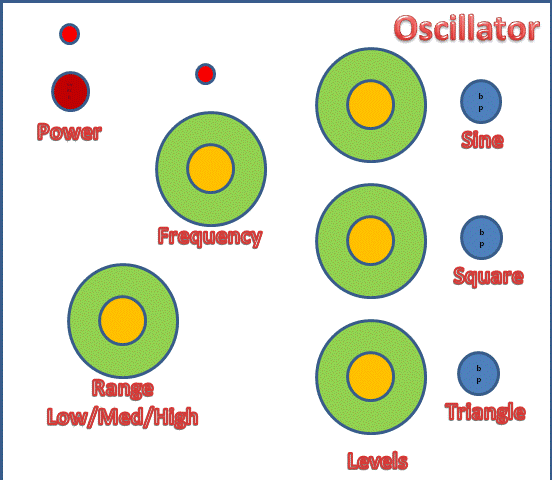
HV Nixie supply: http://www.dos4ever.com/flyback/flyback.html
Components: http://www.allelectronics.com/index.php
Schmitz VCO: http://www.uni-bonn.de/~uzs159/4069vco1.png